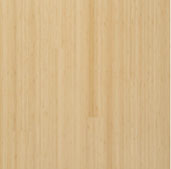When
looking closely at Plan B, we peeking-Tommed into the front door and saw that
the architects had clad the interior “privacy wall’ with naturally finished
wood. Yes, we know: It’s premature to be picking out materials just yet, but
it’s hard not to dream, no? And clearly the architects are thinking a wee bit
ahead here, yes? And wood with some tonal variation seems like a good choice
here. But what kind of wood?
We like
stuff to be consistent, so we reckon that whatever wood we use on the second
story floors (and probably the steps) will be used on the privacy wall.
Material continuity, you understand. But what kind of wood?
As far
as the standard stuff goes, there’s bamboo (Consumer Reports ranks engineered
woven bamboo by EcoTimber as tops for being resistant to wear, scratches,
stains, and dents [and that’s tops as in topping everything, included
hardwoods]). If we go with actual (more standard) wood, we really (really) like
the (oddly cubist) look of hickory. But our dream wood is Rocky Mountain pine
murdered at the claws of millions of mountain pine
beetles and fungi.
bamboo:
hickory:
the blasted bark beetle:
A large
number of trees have been killed by bark beetles in Colorado. We were at a
family function a couple years ago (spreading the ashes of an uncle…) and got
to see the damage. It’s shocking. Whole mountainsides and forests are dead from
the beetle infestation. In fact, so many trees have died, the forest service is
making plans for how to deal with 1,000,000 trees falling over A DAY once the trees
rot and start falling! The beetles have always been there, but because of
warming temperatures, they aren’t getting froze out like they used to. So
they’re having thanksgiving dinner on a pine table every day.
Riding
along with the beetles is bluestain fungi. Once the beetle bores into the bark
to do its thing, the fungi also attacks the tree, staining the wood (you
guessed it!) blue. This is all a tragedy, of course, but there’s one positive:
The blue stained wood is beautiful.
Because
so many trees have died, Colorado is trying to put the dead wood to use. And we
would like to use it! This is all probably a pipe dream (the wood doesn’t
appear to be “mass produced” at this point; therefore, it’s prolly really
really expensive), but we can dream, can’t we? Not to mention that the green message
in this blue wood is mixed: green because we’d be using dead wood; not green
because it’s not local; and ironic because global warming (probably) caused the
death of the trees in the first place.
As
Crystal Gayle would sing if she worked at Home Depot: Don’t it make my brown
wood blue?









In our new modern home, we put in hickory on our second and third floors (and stairs) as an upgrade over bamboo. We liked the natural bamboo but when the stranding resin is added for strength, it gives the bamboo a yellowish tint, which didn't match as well with our furniture. The floor installer swore that the natural unstranded bamboo was strong enough to withstand dents and stratches, but we were skeptical. The hickory does provide much more visual variety than the bamboo.
ReplyDeleteGood point about the yellowing. Unstranded bamboo seems to ding quite easily. Thanks for the comment. (I trust you love your hickory!)
ReplyDeleteI've seen that blue pine up in CO, and I agree that it's really interesting and special. If it's not practical to truck some down here, could you use a faint blue stain on some other wood?
ReplyDeleteThat's a thought (we hadn't thought about)!
Delete